
By David Schnautz
Board President, American Truck Historical Society; Vice President, Clark Freight Lines, Inc
I’ve always been a straight shooter, so let me be clear: The backbone of the American economy doesn’t begin and end with Wall Street or Silicon Valley. It’s the men and women driving trucks down our highways every day.

Before GPS, DEF, and digital dashboards, these trucks pulled hay wagons, hauled feed, and got the job done—day in, day out. Here’s a look at some of the most beloved classic farm trucks that earned their place in the barn and in the history books:

Autocar recently made headlines with its battery-electric terminal tractor, the E-ACTT®, aimed squarely at zero-emissions yard and terminal operations. While the E-ACTT® marks a modern leap forward, Autocar’s roots in electric trucking run surprisingly deep—back to the early 1920s, long before "EV" was common shorthand.

To celebrate the legecy of the W900, production of which ends in 2026, Kenworth has introduced the Legacy Edition—a limited run of just 1,000 trucks honoring more than 60 years of iconic design and long-hood heritage.
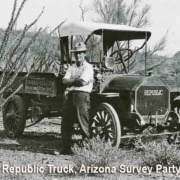
In the early days of motorized freight, a small Michigan outfit set out to redefine the truck industry. Founded in 1913 by Ammi Wright and Clarence Hamilton in Alma, Republic Motor Truck Company grew quickly from its modest origins into one of the nation’s major producers, building vehicles that would come to be known for their durability and dependability.
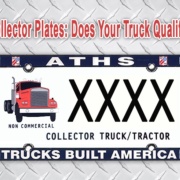
Collector plates really complete a historic semi-truck, but getting them isn’t always as simple as it sounds. Most states allow historic registration for semi-trucks, but the rules vary, and some can be stricter than they are for classic cars. Here’s what you need to know:

The Mack CL350 wasn’t just another truck—it was built for one job: hauling big timber through Canada’s toughest terrain. Produced exclusively at Mack’s Oakville, Ontario, plant between 1976 and 1979, it was one of the rarest models the company ever built, with only 27 units produced, according to Mack’s records.

With all the talk about cross-border trade, it’s a good time to remember that American truck manufacturers have been building trucks outside the U.S. for decades. Some of these operations served only their home markets, while others sent trucks back to the U.S., making this kind of shared production a long-running part of North American trucking history.
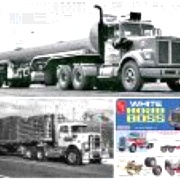
With a name that sounds like an action movie you’d catch at the drive-in, the White Road Boss was produced from 1973 until 1981 and earned a reputation as one of the most reliable and practical trucks of its time, built to meet the demands of jobs.
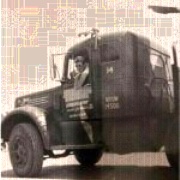
William "Wild Bill" Nankervis was my big brother.
Bill grew up in Grafton and Worcester, Mass. As a young man, he drove cement mixers and dump trucks for Dallphinee's. He drove Jimmys for Dubrey’s, hauling freight. He hauled gas from Rhode Island to Worcester for Lou Desy, and while there, married Lou’s daughter Doris. Wild Bill also drove for a thrill show called Les Rodgers Hell Drivers which traveled around New England fairs and events.

To the Congress of the United States:
I am today transmitting to the Congress legislation to reduce substantially Federal economic regulation over the trucking industry.
The trucking industry today is subject to perhaps more complex, detailed, and burdensome Federal regulation than any other industry in our Nation.
Not only does the Interstate Commerce Commission control who may enter the trucking industry, the ICC must also approve the application of an existing carrier seeking to offer new services or improve its old ones.
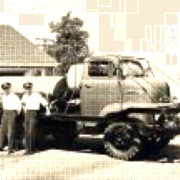
Wildfires are already making headlines with towering flames and hazy skies serving as a stark reminder of their destructive power. At the heart of the battle are the trucks and pickups that firefighters rely on to navigate unforgiving terrain, haul water, and carry equipment. These vehicles have their own history, evolving from simple adaptations to specialized machines designed for wildfire suppression.
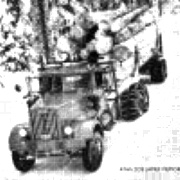
In the early 1900s, driving in snow or mud was a real gamble. If you lost traction, you improvised—drivers would tie ropes or vines around their wheels just to keep moving. That all changed in 1904 when Harry D. Weed of Canastota, New York, invented and patented the first tire chains. Inspired by the makeshift methods he’d seen, Weed designed metal chains that could be fitted around tires, offering a durable, reusable solution.
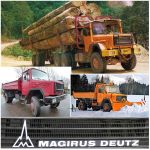
Magirus-Deutz trucks, a rare sight on American highways in the 1970s, trace their roots back to 1866 when Conrad Dietrich Magirus founded the company in Ulm, Germany. Originally focused on building fire apparatus, Magirus became part of Klöckner Humboldt Deutz (KHD) AG in 1936, tying its history to Nicolas Otto, the inventor of the internal combustion engine. The company gained a reputation for rugged designs and the reliable Deutz air-cooled engines.
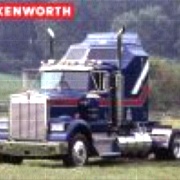
For truck enthusiasts and history buffs, the 1985 Kenworth W900 Liberty Edition is more than a truck—it’s a rolling tribute to Kenworth’s craftsmanship and American pride. This special-edition model didn’t just haul freight; it symbolized the grit and determination of the industry and the drivers who power it.
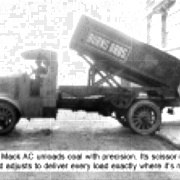
When the temperatures drop these days, staying warm is as simple as turning up the thermostat, but back in the early to mid-20th century, it wasn’t so simple. Keeping cozy at home meant having a steady supply of coal on hand—and that’s where the coal delivery process began. Before motorized trucks took the job, horse-drawn carts clattered down icy streets with workers lugging 100-pound sacks of coal to fill basement bins. With coal heating nearly 55% of U.S. homes by 1940, demand surged, and as technology advanced, so did the process. Soon the streets echoed with the rumble of coal trucks, built tough to handle heavy loads and unforgiving weather.
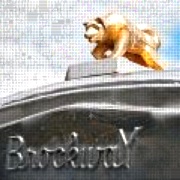
Made you look! That’s not a bulldog up there on the hood—it’s a Huskie. The Brockway Huskie wasn’t just another branding decision—it was a bold move that put a tough, no-nonsense face on some of the most dependable trucks ever built. Yes, we know it's technically spelled Husky, but Brockway had its own way of doing things, and "Huskie" became part of its identity.
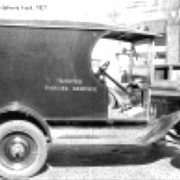
Santa may deliver presents across rooftops on his magical sleigh, but on the ground, United Parcel Service (UPS) trucks are the true heroes of the holiday season. Among the earliest package delivery companies in the U.S., UPS has built a legacy of reliability and innovation, ensuring that billions of packages reach their destinations each year. Let’s unwrap the fascinating history of UPS trucks, tracing their evolution from humble beginnings to the advanced vehicles we see today.
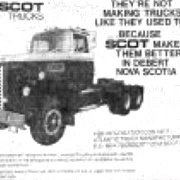
Scot Trucks might not have dominated the industry, but these purpose-built rigs carved out a niche in some of the toughest jobs out there from working the oil fields and hauling logs and lumber to tackling construction work— where reliability isn't just important, it's essential.
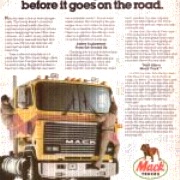
The Mack MH Ultra-Liner, introduced in 1982, was Mack’s answer to the evolving demands of the cab-over-engine (COE) market. Designed to replace the WS Cruise-Liner, the Ultra-Liner was built with innovation and efficiency in mind, featuring a lightweight fiberglass cab reinforced with a metal frame. This combination reduced weight without sacrificing durability, a practical design for long-haul operators aiming to maximize fuel efficiency.